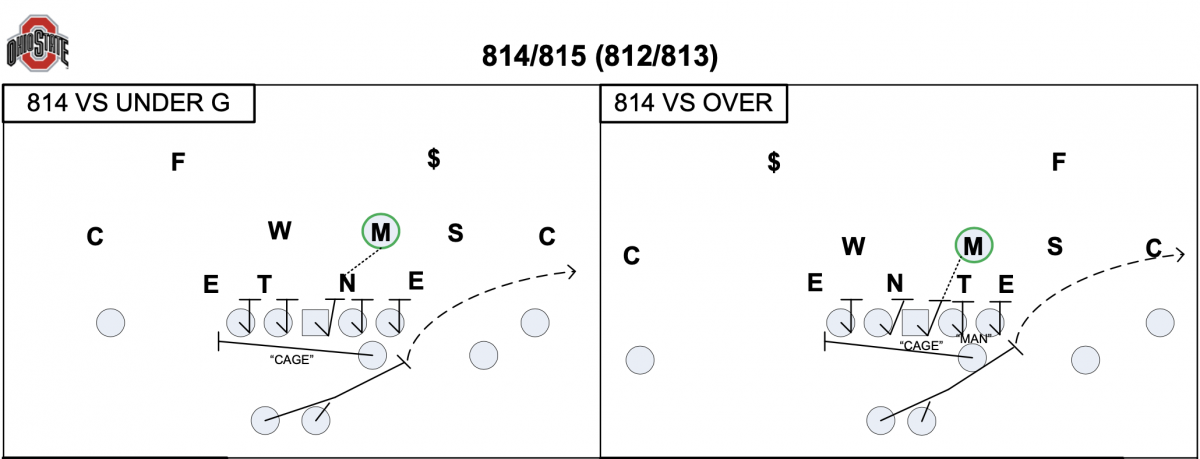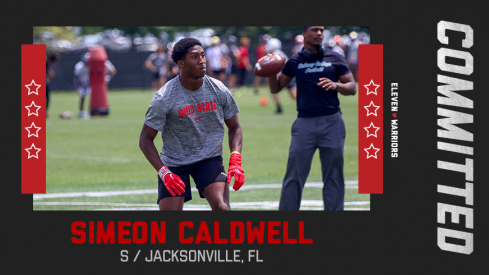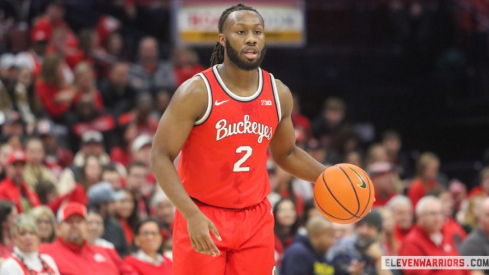Ohio State adds another top-100 safety as Simeon Caldwell commits to the Buckeyes.
Every offseason, Ryan Day and the Ohio State coaching staff examine their roster to determine their offensive identity for the upcoming season. At this time last year, questions remained abounded as to what the arrival of Justin Fields would mean for Buckeye game plans.
Though the talented transfer was touted higher than any quarterback since Terrelle Pryor, it was unclear just how his gifts would be utilized. With good size and athleticism, it seemed as though Day might rely heavily on option concepts as they had with J.T. Barrett, using Fields' legs to pick up critical yardage.
When Fields scored on a 51-yard option keeper to cap the very first possession of the season, it certainly appeared as though the 2019 Buckeyes would revert back to the ground tactics that were largely abandoned during Dwayne Haskins' record-setting aerial attack the year before. By season's end, however, the story was far different; Fields had emerged as one of the nation's best passers, finishing behind only Joe Burrow in many metrics.
Clean pocket passing grade:
— PFF College (@PFF_College) March 26, 2020
1. Joe Burrow, LSU - 94.9
2. Justin Fields, OSU - 94.1
3. Micale Cunningham, UL - 93.0 pic.twitter.com/P0KwTgXj8t
But Day hadn't merely duplicated the game plans developed for Haskins a year prior. Though many of the same concepts remained, such as Spot/Snag, Mesh crossing routes, or Spread (aka Saints), the manner in which Day used the run game to set up the pass proved to be lethal.
Early on in the season, it became clear that Ohio State would regularly call for the use of two-tight end sets, occasionally even lining up Fields directly under center instead of in the shotgun, and running the ball with J.K. Dobbins behind zone-blocking schemes. As Dobbins began racking up yards with relative ease, defenses began creeping up extra defenders to stop him, leaving themselves exposed against the pass.
With a relatively young offensive line that returned only one starter from the year prior, the Buckeyes often left both tight ends and the back in for additional protection, releasing just two receivers downfield. In the red zone, this became a particularly devastating tactic, as although Fields had limited options to which he could throw, his legs offered him a dangerous third option.
With his athleticism acting as an effective alternative to forcing the ball into tight windows, he became of the nation's best passers inside the opposing 20-yard line.
Justin Fields red zone passing last season:
— PFF College (@PFF_College) June 3, 2020
90.0 PFF passing grade
24 Touchdowns
0 Interceptions pic.twitter.com/djqSWH3Ila
It's not a coincidence that Ohio State's red zone effectiveness decreased after Fields suffered a late-season knee injury that limited his mobility. Though he was healthy enough to play (which he still did very well down the stretch), the Buckeyes stalled near the goal line far more than they had all season, as Fields lacked the explosiveness to get himself out of tight jams, opting instead to throw toward covered receivers.
Fields' legs proved to be a critical component in the Buckeye passing game in other ways, though. As he began lining up under center more often, Day married bootleg play-action passes to the same formations in which he'd call mid and wide zone handoffs, hoping to catch the defense out of position while shrinking the field for his sophomore QB.
On the Flood concept shown below, Fields is given a simple deep-to-short read with an easy dump-off to the tight end right in the flat should he need to get rid of the ball. But Fields would quickly show a knack for anticipating the breaks of his receivers and delivering accurate passes without even needing to set his feet.
As the season progressed, however, it became clear that his mobility was not, in fact, his most valuable asset. Rather, he proved to be deadly on deep balls, finishing the season with a completion percentage of 46.2% on throws of 20+ yards downfield, higher even than Haskins' 43.1% mark a year prior.
To ensure he had the time to find receivers downfield, Day often called for 814/815 protection, which looks like the Crunch run schemes he often used to seal the backside edge with a tight end coming across the formation.


As he told the crowd at the 2019 Ohio State coaching clinic, “We want to have a play-action off of all of our runs. So all the run buckets you saw early on, they should have some sort of play-action. If you have a run that doesn’t have a play-action, then it’s not married up right. In a perfect world, you’d like to have a run, a play-action, and then a screen off that run as well."
With the tight end and running back staying in to block, Fields could comfortably identify open routes downfield.
With a brutally effective run game that wore down opponents, Day began calling for more and more Choice routes to take shots downfield. Based off the principles found in the old run-and-shoot playbooks of the 1970s and 80s, these routes play out like backyard football games where the quarterback and receiver simply look to find green grass and 'get open.'
Made popular a decade ago when Baylor rose to national prominence, such routes turn any coverage into man-to-man, as the outside receivers operate far outside the numbers and leave the corner and safeties on an island. Should the defender play tight on the receiver off the line, it simply becomes a foot race downfield. If they play off to one side, then the receiver will either bend his route the opposite way or break it off entirely, hoping the quarterback reads the same thing.
Early on in the season, Fields missed a number of these open windows, failing to throw on time and taking unneeded sacks instead. These concepts were a major reason why the Buckeyes were 108th in the nation with 35 sacks allowed.
By the final month of the season, though, Fields appeared to have mastered the Choice concept, anticipating difficult throws well before they actually came open and making very difficult throws look ordinary.
This ability to complete shots downfield with regularity provided literal air cover for the Buckeye run game, which created a vicious cycle for defenses. The threat of getting beat deep kept defenders from cheating up against the run, only to see Dobbins rip of gain after gain. Once the Buckeyes had moved the chains two or three times, however, Day would dial up a shot off play-action like the ones shown above, only to catch a demoralized defender out of position.
This effectiveness in both phases allowed the Buckeyes to feature one of not only the most explosive offenses in the nation but also one of the most balanced. Only Oklahoma and the Naval Academy finished the season ranked in the top ten in both rushing yards-per-attempt and passing yards-per-attempt. It's no coincidence that these three programs finished the 2019 season with a combined record of 36-5.
As Fields prepares for his likely final season in Columbus, his presence should help ease the backfield transition from Dobbins to Trey Sermon and others. With deep threats Chris Olave and Garrett Wilson returning, defenses will assuredly be wary of giving up the deep ball to such a talented passing attack.
But as shown in so many of the examples above, much of Fields' success came from his outstanding timing and anticipation. After missing most of spring practice, maintaining that connection with his wide receivers throughout limited interactions this summer will be critical to reaching even greater heights in 2020.



